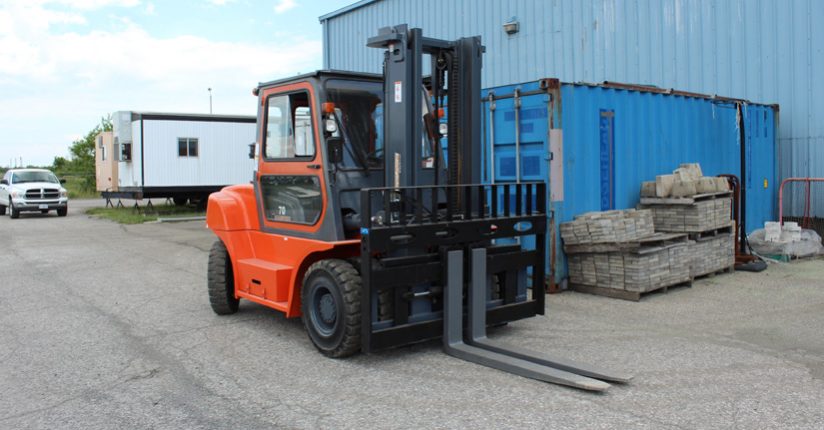Preparing Your Forklift for Winter Storage
As the leaves begin to turn and temperatures drop, it’s time to prepare your forklifts for the cold winter ahead. While some businesses comfortably operate their forklifts throughout the winter, for many others, it isn’t practical to continue operating as demand grows sluggish with the arrival of winter. For these businesses, the weeks leading up to the start of winter are used to prepare their forklifts for winter storage. To make sure your forklifts run just as well this spring as they do now, we recommend that you use the following tips:
Dirt Removal
It is essential to thoroughly clean your forklift before storing it over the winter months. Without a thorough cleaning, the thick coating of mud, muck and grime on your forklift will harden over time, making operation more difficult in the early weeks of spring. During the cleaning process, be sure to pay particular attention to the engine bay, undercarriage, wheel hubs, brakes and all other areas exposed to the elements.
Maintenance
While you won’t be running your forklift for the next couple of months, this shouldn’t prevent you from performing regularly scheduled maintenance. In addition to regularly scheduled maintenance tasks, conduct a thorough examination and keep an eye out for any problematic wear and tear. It’s important to take advantage of the off-season to address any lingering maintenance issues or repairs that were postponed to avoid downtime during the busiest months of the year.
Top Up Fluids
The first thing you should check is your engine oil. If it is thick/sooty or you’ve reached the recommended hour limit for your oil and model, you need to change your oil before storing your forklift for winter. Otherwise, it’s safe to wait until spring and start next season with a fresh change of oil. Next, check your other fluid levels and top up where necessary, paying particular attention to your anti-freeze levels. After you’ve washed the forklift, also make sure to take your forklift out for one last drive to remove any remaining water from the crevices and circulate the topped up fluids.
Battery Care
While opinions vary on how to prepare a battery for storage, we recommend taking your battery out of your forklift completely. Store it in a dry, clean area and leave it connected to a battery maintainer or tender to ensure it is fully charged come spring.
Select an Appropriate Storage Site
There are a number of factors you should consider when selecting a storage site for your forklift. You’ll want to find an enclosed storage space with a firm and level concrete floor – not bare dirt floors like a covered enclosure or a barn. While the facility doesn’t have to be climate controlled, it should be devoid of excessive moisture.
Once parked at your storage site, there’s a few additional steps you should take to prevent unwanted damage to your forklift while it’s in storage. If you have a cab, for example, make sure to open your windows an inch or so to allow for air circulation and prevent a buildup of moisture/mildew inside the cabin. It’s also important to make sure your forklift is protected against rodents, which are liable to use your forklift as a nesting site over the cold winter months, chewing through seat upholstery and wires in the process. To prevent this, you can place a ball of steel wool in the exhaust pipe and air intake openings, and place moth balls inside the cabin.
Closing Thoughts
The last thing you can do to make sure your forklift is fully operation come spring is to simply leave it alone. It is a commonly held misconception that you should let your forklift go through the motions every couple of weeks to keep it in prime operating condition. Unless you plan on operating it for at least an hour, merely letting it idle may cause more harm than good. These short runtimes can lead to a buildup of condensation in a variety of components – condensation which will not have a chance to properly burn-off through regular operation. And, even if you plan on taking it out for an extended period of time, you’ll have to complete this entire process again to prepare it for storage after you’re finished.


We left ours outside for the winter – will it be damaged? How much would it cost to repair?
Can’t you store forklift outside?
Hi Ero,
There’s nothing stopping you from storing your forklift outside, however, it’s best to protect your investment and limit damage during storage.